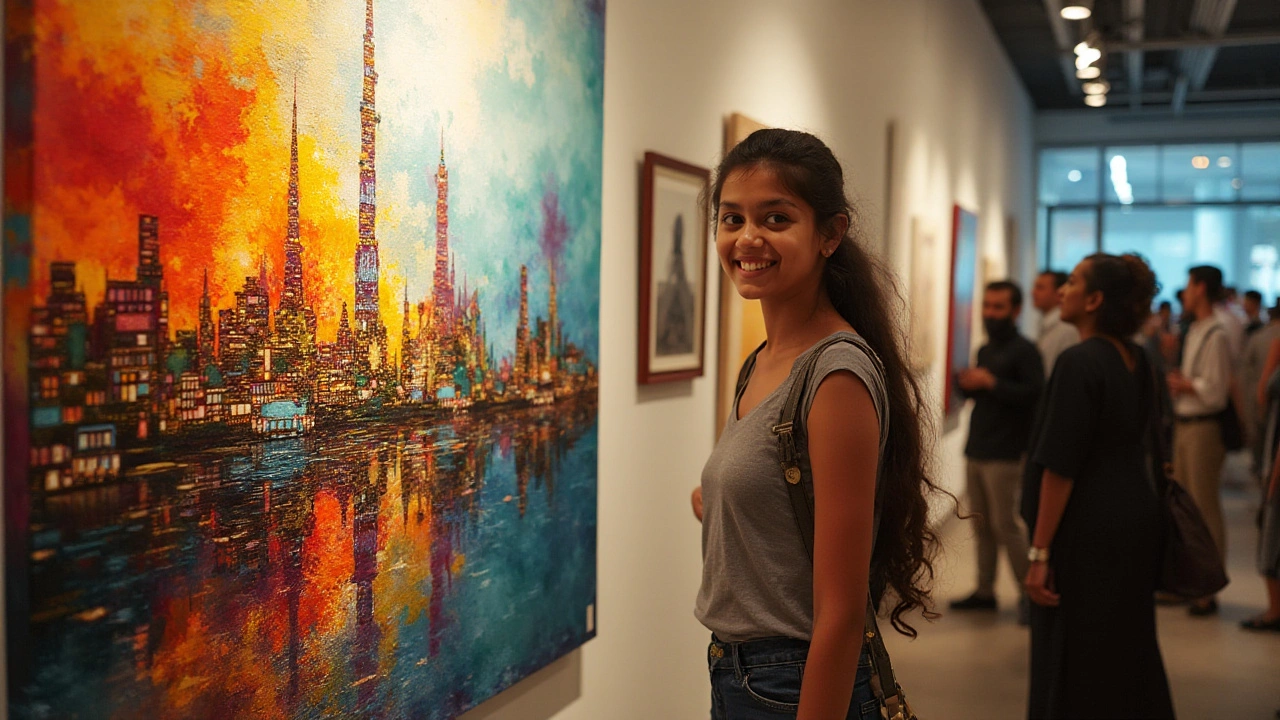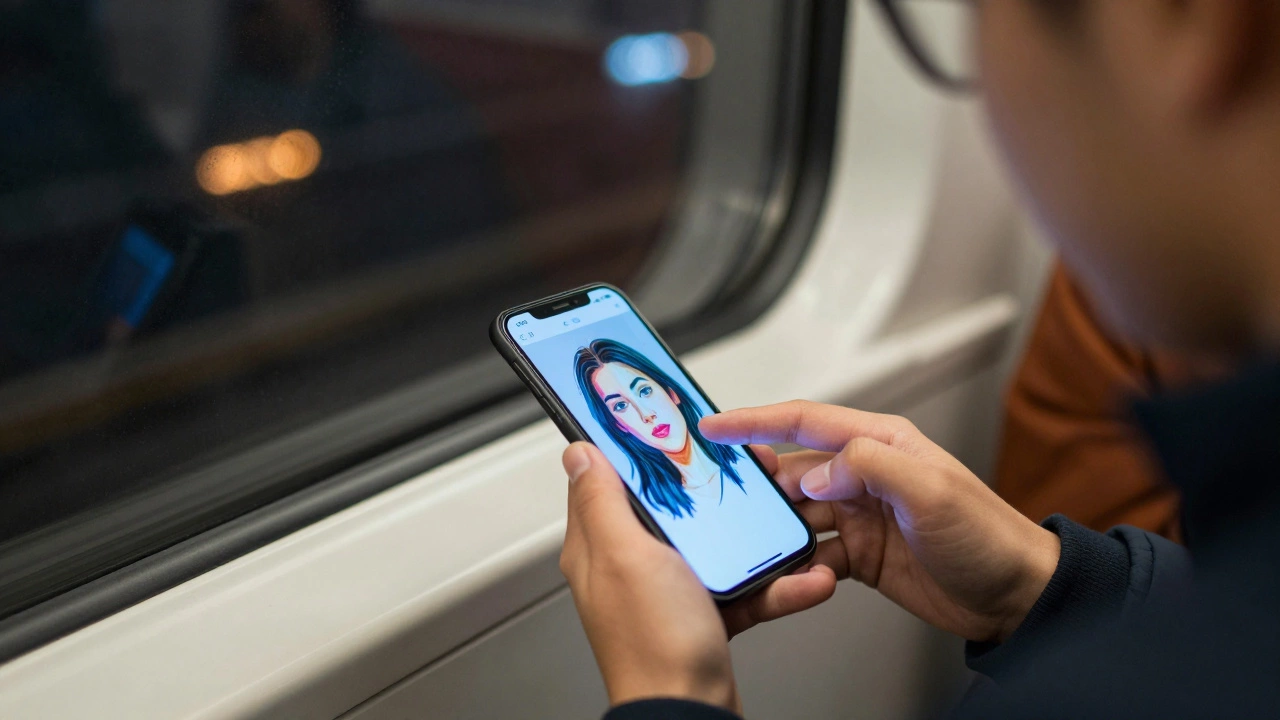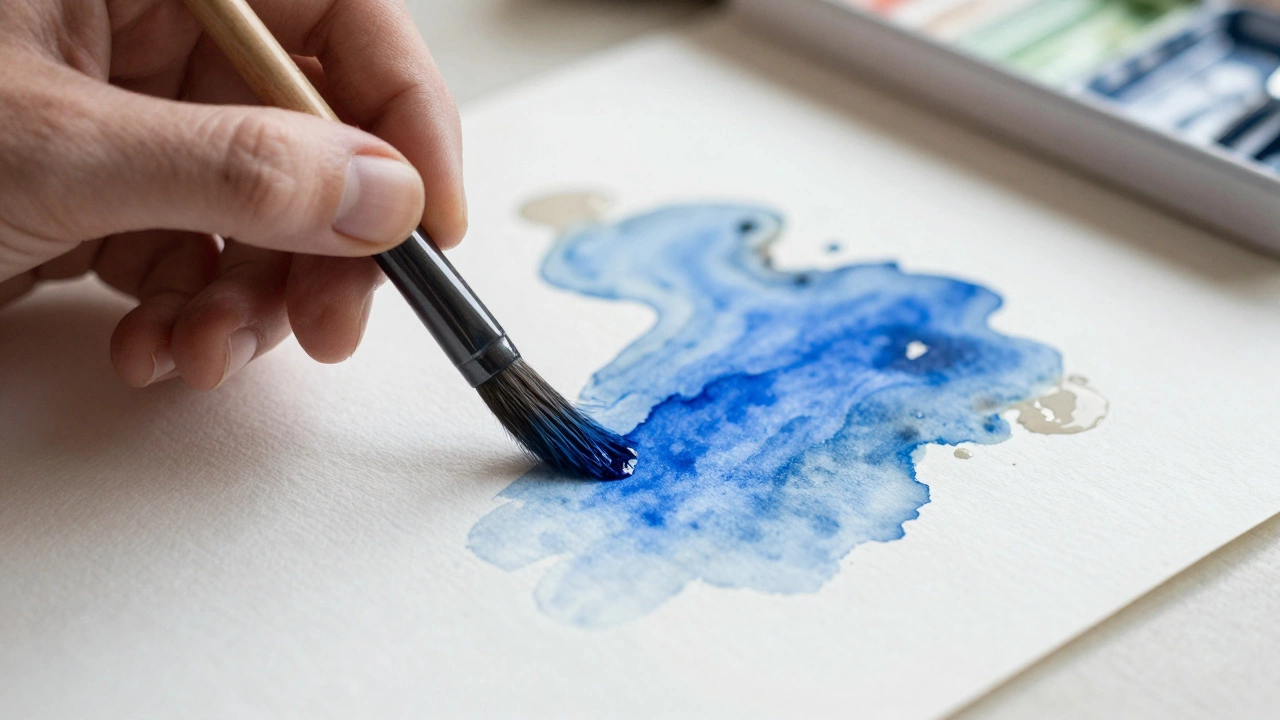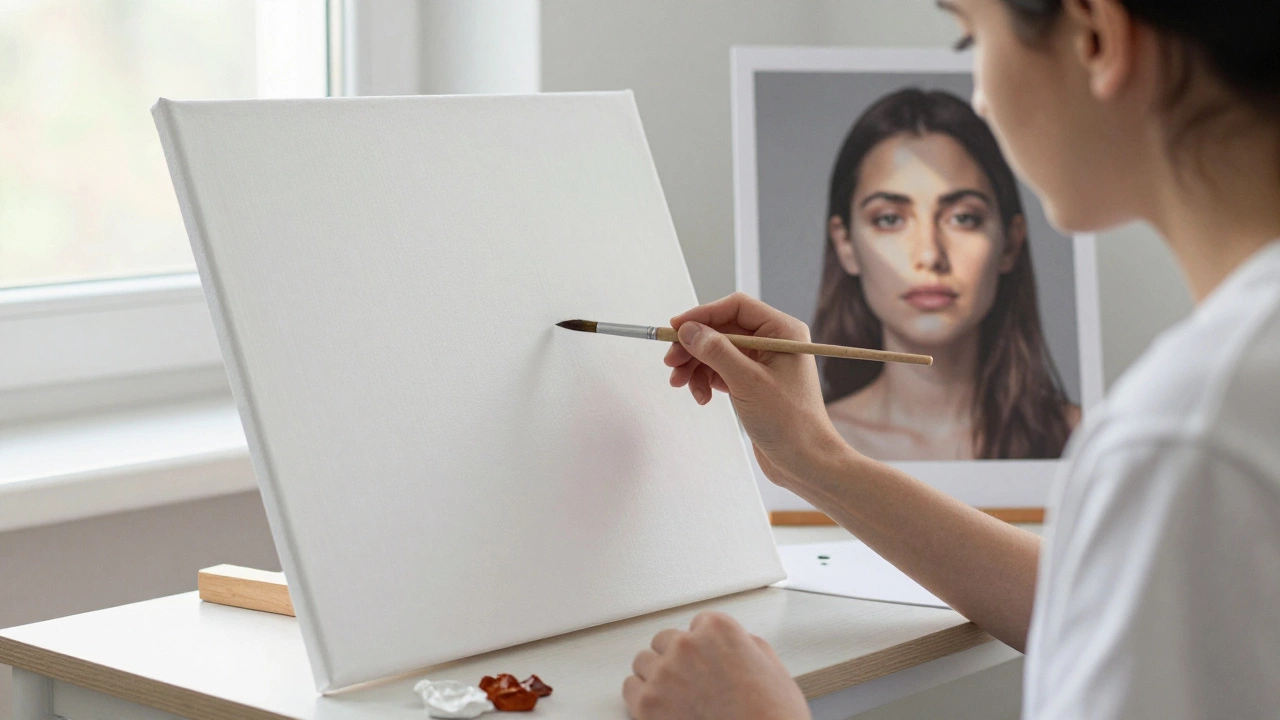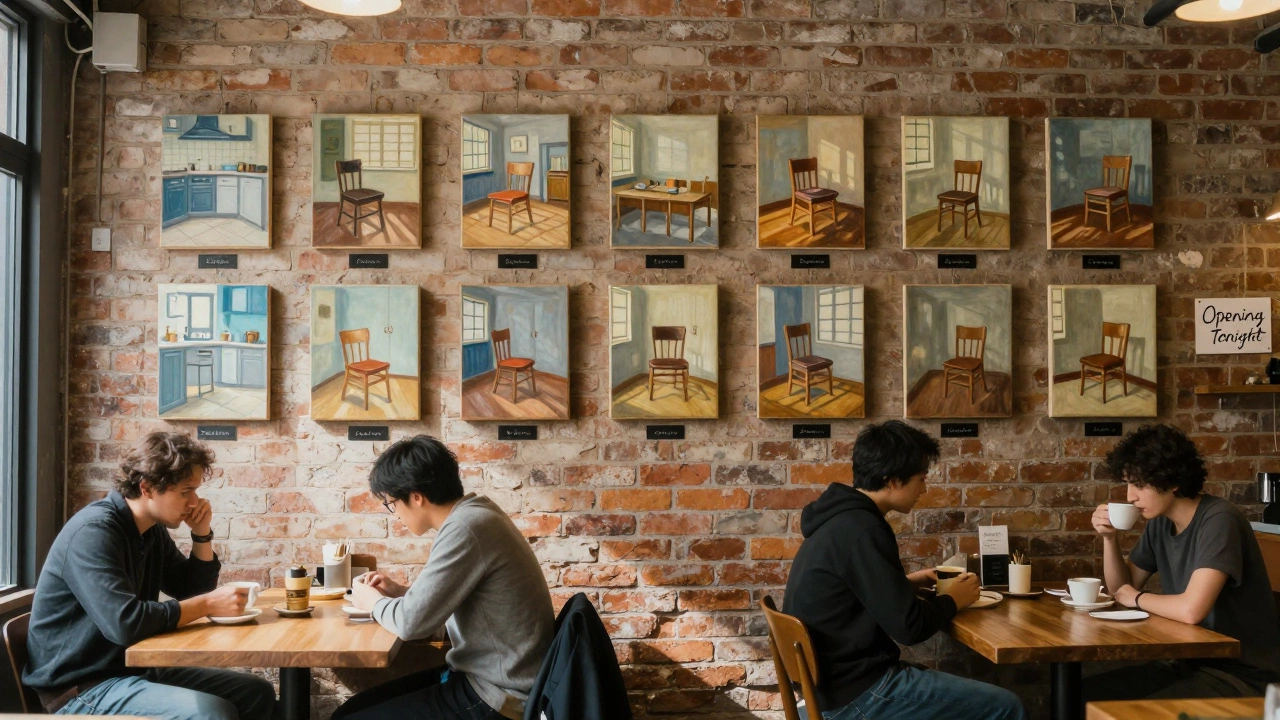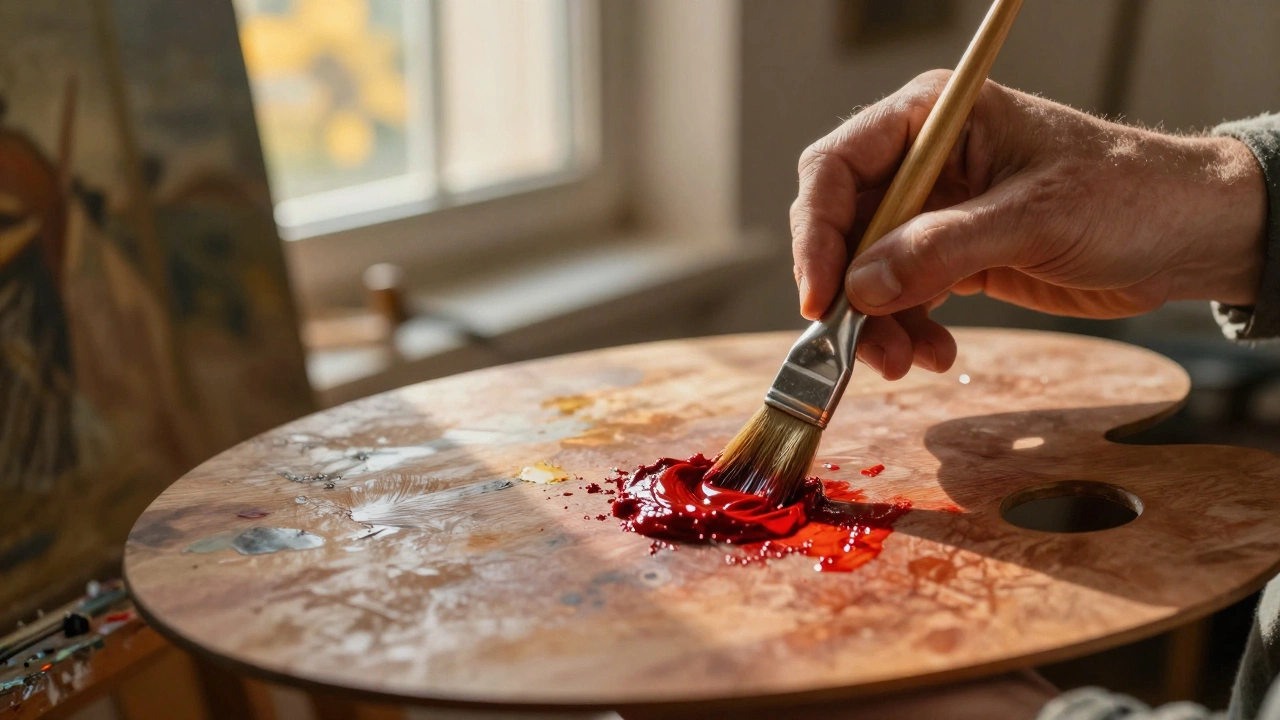Contemporary art captivates audiences with its bold, innovative approaches and often provocative themes. We reside in a world perpetually reshaped by social dynamics, groundbreaking technologies, and shifting cultural borders, and contemporary art reflects these rapid transformations more than any other period in art history.
While it may seem straightforward to classify art made today as contemporary, the truth is more complex. Understanding what exactly makes a piece of art 'contemporary' involves diving not just into its creation date but also into the artist's intention, the medium used, and the message conveyed.
This exploration provides keys to decipher the evolving language of contemporary art and offers guidance for anyone eager to navigate its vibrant scene. By examining the themes and aesthetics that enliven contemporary art, we can better understand the context in which today's artists create, connect, and comment on the world around us.
- Understanding Contemporary Art
- Key Characteristics of Contemporary Art
- The Role of Time and Innovation
- Evaluating Art as Contemporary
Understanding Contemporary Art
Contemporary art often puzzles audiences with its diverse manifestations, yet this diversity is precisely what defines it. Emerging from a post-World War II backdrop, the movement extends to art produced at the tail end of the 20th century to the present day. During this period, artists have cast off the shackles of traditional art classifications and have embraced a more interdisciplinary approach. It is a realm where minimalism, abstract expressionism, pop art, and conceptual art collide, allowing artists to explore boundless possibilities. This dynamic field encourages the viewer to question preconceived notions of art and seek deeper meanings beyond surface appearances.
One of the key characteristics of contemporary art is its reflection of current events and societal issues. Artists often use their platforms to comment on prevailing political, social, or cultural topics, creating a profound dialogue between the artwork and its audience. This commitment to relevance can be seen in Ai Weiwei's politically charged installations or Banksy's street art, which critiques societal norms. Such pieces compel viewers to engage with the work actively and reflect on their position within the societal landscape. As the highly interconnected world evolves rapidly, so too does contemporary art, absorbing and reacting to a kaleidoscope of influences.
Beyond thematic concerns, contemporary art is characterized by its experimentation with new mediums and technology. This is evident in the works of digital artists who blend software, video, and interactive installations to craft their vision. Olafur Eliasson, famed for his immersive environmental installations, masterfully uses technology to create awe-inspiring spectacles that challenge perceptions of reality. The ongoing dialogue between contemporary artists and technological advancements fosters a fertile ground for innovation. This environment enhances the understanding of how contemporary art continues to push boundaries and redefine the concept of art itself.
A quotation from an artist can offer insight into the realm of define contemporary creativity. According to Damien Hirst, "Art's about life and it can't really be about anything else... there isn't anything else."
His words resonate through contemporary art's essence: it is life itself that shapes and colors modern artistry, reflecting the myriad experiences and emotions encapsulated in each piece. By recognizing these elements, one can appreciate how contemporary art serves as a mirror to societal progress and human experience in a constantly shifting landscape.
Therefore, understanding contemporary art entails recognizing its context in time—a blend of history, present conditions, and predicted futures that authors unique narratives in each piece. An overview of leading artists, movements, and influential pieces forms a deeper layer of comprehension. This allows the audience to discern undercurrents within the artistic landscape. Art styles and periods become crucial identifiers, shedding light on innovative experimentation methods that transcend traditional confines. With each piece, contemporary art bridges the familiar and the unknown, capturing the evolving story of humanity through its stories and myriad expressions.
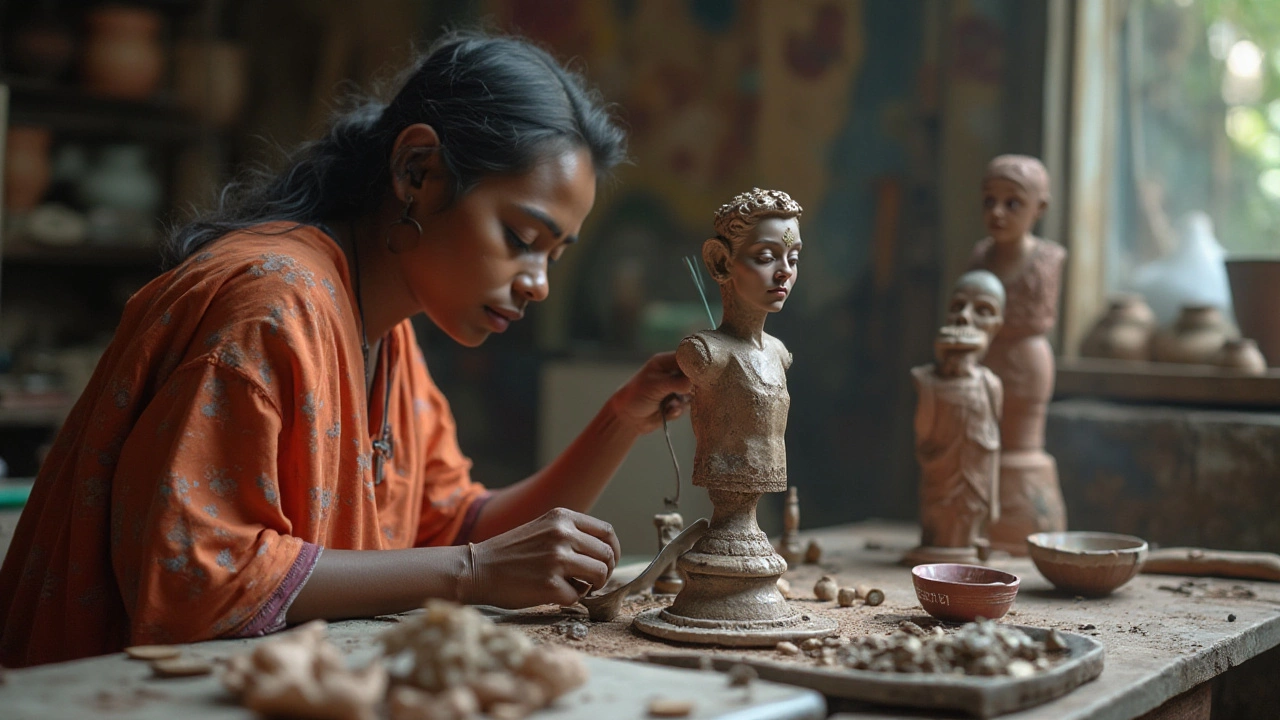
Key Characteristics of Contemporary Art
Contemporary art, with its broad spectrum and limitless boundaries, thrives on diversity and innovation. Unlike art forms of the past, which adhered to strict guidelines and styles, contemporary art embodies a spirit of experimentation and freedom. One hallmark of this genre is its eclectic nature, where traditional and non-traditional media intermingle. Artists play with painting, sculpture, photography, and digital art, synthesizing them to reflect the multifaceted realities of the modern world. This medley of forms underscores a crucial understanding: contemporary art isn't about sticking to one lane. It is about exploring and blending varied forms into a cohesive dialogue.
Another defining characteristic of contemporary art is its ability to address and comment on current social and political issues. As societies evolve, art becomes a mirror that reflects injustices and triumphs, struggles and celebrations. Artists such as Ai Weiwei utilize their platforms to tackle themes of human rights and freedom, prompting viewers to engage with the world around them more critically. This does not merely entertain but educates and instigates dialogue, underscoring how powerful a tool art can be in shaping socio-political discourse.
"The role of the artist is to ask questions, not answer them." — Anton Pavlovich Chekhov
In contemporary art, cultural identity often takes center stage. As globalization interweaves cultures, contemporary artists delve into personal narratives and communal histories, offering works that are deeply personal yet universally resonant. Works from artists like Yayoi Kusama, with her immersive infinity rooms, transport viewers into a realm where the personal becomes universal. By weaving personal narratives with cultural commentary, contemporary art fosters a deeper connection between the creation and the observer.
Finally, technology has become an inseparable part of the contemporary art landscape. With advancements in digital tools and platforms, artists now have unprecedented avenues to express their creativity. Virtual reality, artificial intelligence, and blockchain are just a few innovations reshaping the way art is created, shared, and consumed. A boundary-pushing example is the emergence of NFTs (Non-Fungible Tokens), which have revolutionized ownership and distribution of digital art. This technological embrace doesn't merely augment art; it redefines what art can be in the digital age. For instance, a survey highlighted that over 76% of contemporary artists rely on some form of digital technology during their creative process, emphasizing tech's role as both tool and inspiration in contemporary artistry.
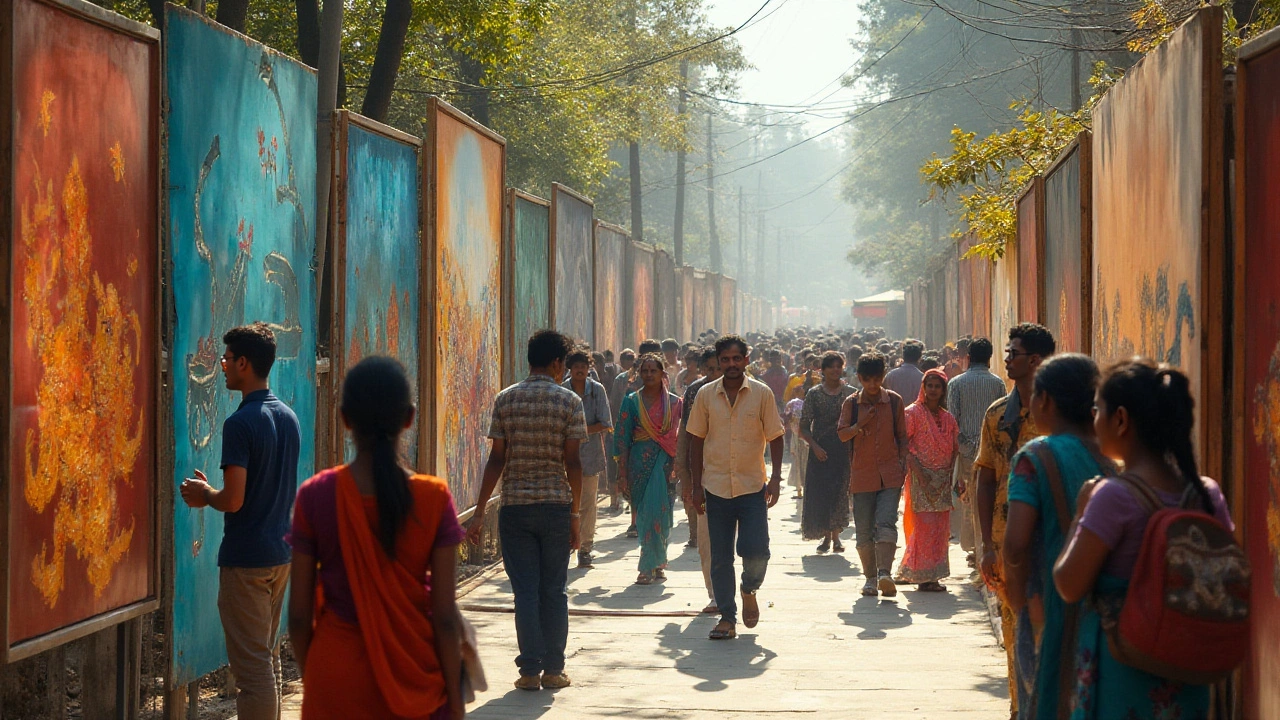
The Role of Time and Innovation
Contemporary art thrives at the intersection of time and innovation, constantly pushing the boundaries of what art can be. This genre not only reflects on the current moment but also anticipates future shifts in culture, technology, and social perception. The role of time in the evolution of art is critical, as it allows artists to engage with the pressing issues of their era. Art becomes a living document of societal change, capturing the nuances and complexities of today's rapidly transforming world. The question of whether art is truly contemporary is often linked to whether it embraces the prevailing ethos of its time, incorporating fresh perspectives that challenge traditional norms.
Innovation, too, plays a central part in determining what is truly contemporary in the art world. As artists explore new mediums and technologies, they open up fresh possibilities for creative expression. For instance, the digital revolution has given rise to new art forms such as virtual reality installations and digital sculptures, pushing the canvas beyond tangible material and into the infinite possibilities of digital space. These advances allow for multi-sensory experiences that were unimaginable in traditional art forms. Artists who embrace new technologies often lead the avant-garde, creating works that not only engage but also challenge the viewer to reconsider preconceived notions of art.
Commenting on the impact of these changes, a prominent art critic once noted,
"Contemporary art is a kaleidoscope of perspectives, a collision of temporal and technical ingenuity that redefines our understanding of beauty and meaning."This perspective underscores the profound shift we see in art today, where the ephemeral and the physical coexist, offering artists endless creative opportunities.
The role of time and innovation in contemporary art is further highlighted by the way artists incorporate topical issues such as climate change, identity politics, and digital culture into their works. These themes not only reflect current anxieties but also experiment with forms and techniques to spark dialogue and inspire change. The interplay between technological advances and thematic relevance ensures that contemporary art remains not only an expression of the artist's intent but also a mirror held up to society. This dynamic interplay of time and innovation is what keeps contemporary art vibrant and continually evolving, offering audiences new worlds to explore and understand.
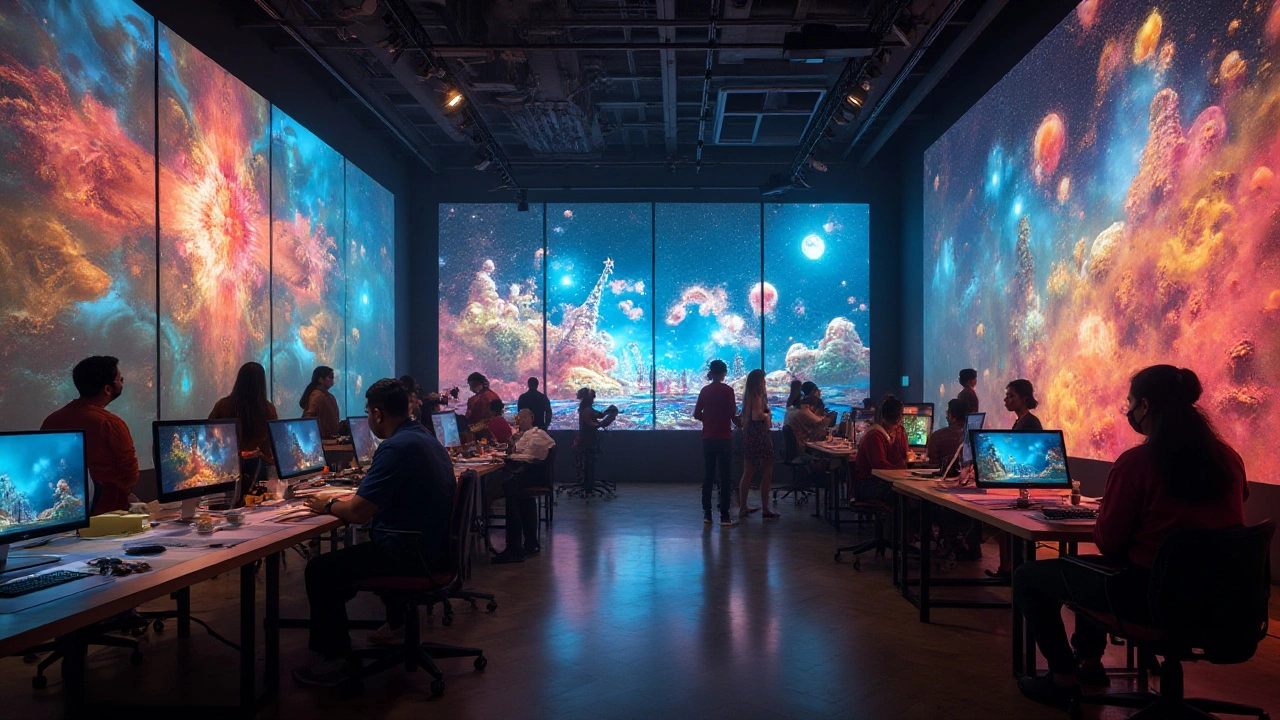
Evaluating Art as Contemporary
Identifying whether a piece of art is truly contemporary involves more than just checking the date it was painted or sculpted. It requires a deeper dive into the essence of what it means to reflect the current times. Contemporary art often thrives on challenging norms, embracing contradictions, and pushing the boundaries of traditional disciplines. To say an artwork is contemporary often means seeing it as a reflection of today's society, whether it's through technology, political commentary, or cultural diversity. Unlike previous art movements that might focus on a set technique or style, contemporary art is remarkably fluid, allowing it to adapt and evolve with the world around us. Its strength lies in its ability to provoke thought and engage with the viewer, creating a dialogue rather than a monologue with its audience.
The influence of technology cannot be overstated when considering what makes art contemporary. With the advent of digital tools, artists today are exploring new mediums that were unheard of just decades ago. Art is no longer confined to the walls of galleries; it has ventured onto online platforms, interactive installations, and even virtual reality spaces. This technological integration is a hallmark of contemporary art, signaling innovation and the blending of art with STEM fields. Artists like Yayoi Kusama, known for her mesmerizing polka-dot installations, often use technology to amplify the sensory experience, creating an immersive world that transcends traditional boundaries. This blending of tech and art not only expands what art can be but also encourages a participatory experience, inviting the viewers to become an integral part of the artwork itself.
But it's important to remember that while technology plays a significant role, contemporary art is rooted in its commentary on societal issues. Whether it's addressing social justice, environmental concerns, or identity politics, contemporary artists are often inspired by the world around them. Take Banksy, whose anonymous street art tackles myriad issues, from capitalism to human rights, all with a satirical twist. These messages resonate with modern audiences, offering a critique of the current state of the world and prompting viewers to reflect on their own perspectives. In this way, contemporary art serves as both a mirror and a lens, challenging viewers to see beyond the aesthetic surface and confront the deeper context and implications.
"The role of the artist today is to not only create images, but to create meaning," suggests Jerry Saltz, renowned art critic. This encapsulates the essence of contemporary art as it merges visual impact with intellectual engagement.
Given its complexity, evaluating art as contemporary often involves considering several key elements. Artists' intent, the socio-political climate, and the interplay of materials all come into play. While traditional analysis might focus on technique and beauty, contemporary critique dives into intention, impact, and the art's transformative potential. One might ask, "What conversation is this art piece having with the current world?" or "How does this work challenge or affirm current ideologies?" The very idea of what is "contemporary" is constantly in flux, much like the world itself.
The Importance of Context
Context is paramount when evaluating contemporary art. An artwork that seems avant-garde in one period may become mainstream in another. In the early 20th century, Picasso’s abstract forms were revolutionary, challenging the perspectives of even the most seasoned art critics. Fast forward, and abstract art is a staple in many collections, yet it continues to evolve with new interpretations. The same holds for contemporary pieces. What sets current artworks apart from modern ones is how they engage with—and often challenge—the socio-political dynamics of their time. Context enriches the story of each work, helping viewers appreciate not just its aesthetic value, but also the message it conveys in today's societal framework.
